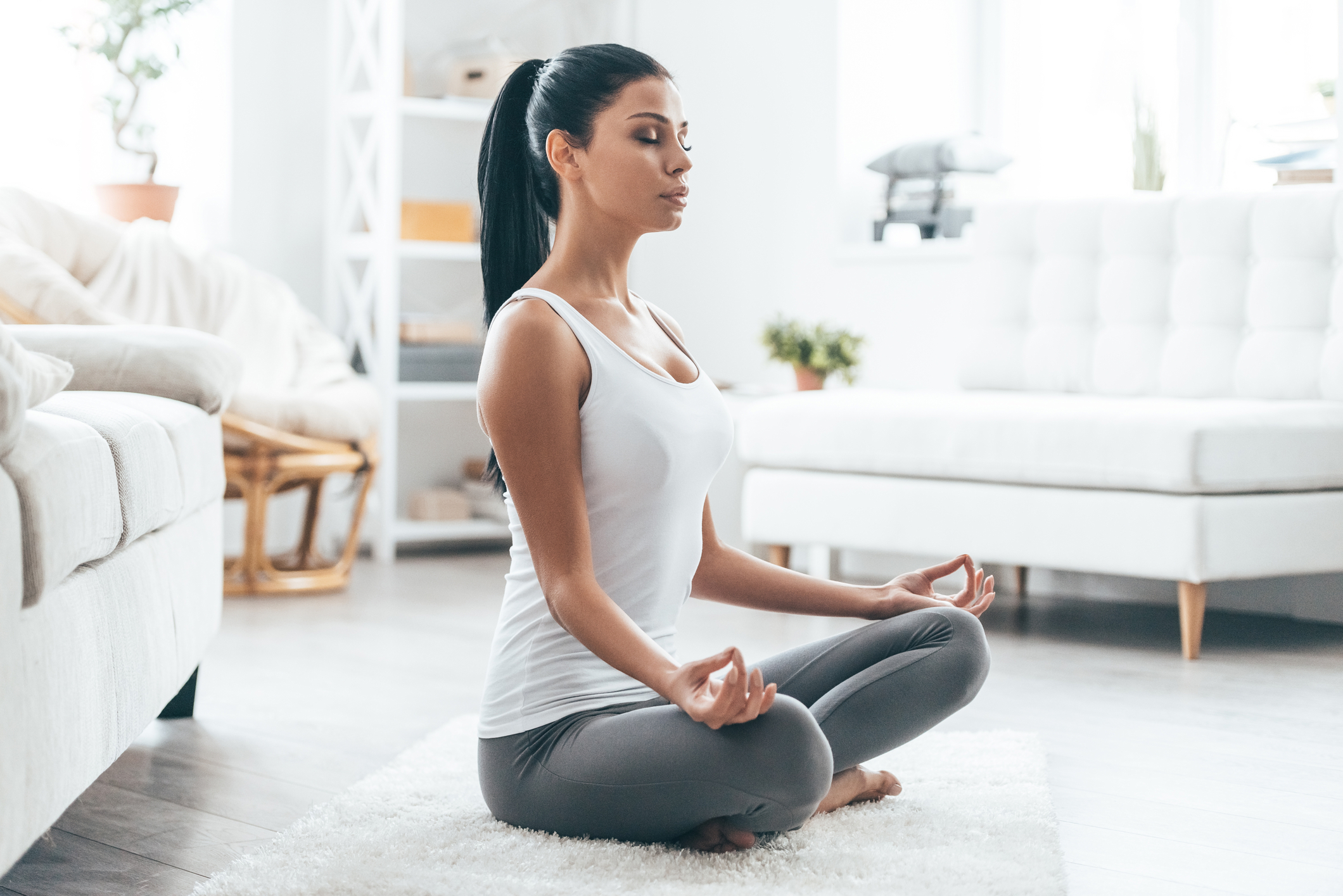If you love your group yoga class, good job and keep it up. However with COVID-19, many in-studio yoga classes were temporarily shut down. Now that states are loosening their lockdown restrictions, yoga studios are beginning to have in-person classes once again but likely are limiting the number of students allowed in order to practice social distancing.
You want to do yoga to enhance flexibility, strength, and body awareness and you should. But with class size restrictions or concerns of increasing your exposure to the coronavirus infection, you next best bet for staying in shape is to start a home yoga routine practicing whenever you want at your own pace. This commendable spirit and attitude can help you get in shape while listening and responding to your body. Besides, practicing at home is free and convenient. You decide when and for how long you devote to towards yoga.
Getting started and sustaining a regular home yoga routine can be done but can also be challenging. You will need a place in your home conducive for practicing but also free from distractions. Ideally, a spot without any electronics such as the TV, computers, or dirty clothes needing washed. You will need an area large enough allowing you to lie down or perform poses that may mean moving furniture to the side of the room. Ask yourself are you okay if family members are present in the room or do you prefer the space all to yourself? What time of day will be best for you to establish a regular routine?
Here are other suggestions to consider when planning on setting up your home yoga practice:
- Create a schedule – Decide what time of day is best for your day-to-day schedule. Is it first thing in the morning, after work, or before bedtime. It’s best to avoid shortly before or after mealtimes or when needing to spend time with your children. Choose a time that allows you some privacy (if you want that) to do your yoga poses.
- Be flexible on your expectations – No one is perfect and no yoga routine is either. Ditch the belief that your yoga routine has to be a certain each and every time or certain poses must always be done. A home yoga practice may be performing restorative poses one day and more vigorous poses the next. Every single time you practice, poses can be different. This can actually help enhance and improve energy levels and nutritional and sleep habits while relieving muscle tension and stress.
- Set moderate, realistic goals – Whether it’s five minutes, 15 minutes, or an hour a day, it’s exactly enough if it’s the right amount for you. Studies show that 10 minutes of yoga a day is more effective than 90 minutes once a week. It’s the quality of time you spend practicing that matters, not the quantity.
- Always practice on a mat – This help you to avoid slipping and injuring yourself.
- Place your mat on a hard, even surface – While practicing on carpet may seem ideal, it’s not. Practicing yoga on carpeting affects weight distribution in the hands during weight-bearing poses which can lead to wrist pain. It can also affect balance in standing poses.
- Yoga blockers – Have a minimum of two thicker yoga blockers (either cork or foam) to support yourself in seated and standing poses.
- Yoga strap – Aim to have at least one yoga strap; if not available, use a resistance band.
Once you’re well on your way to regularly practicing yoga, you can bring the mental and physical benefits of yoga into your daily life as you find yourself becoming more mindful of your body, presence in the moment and self-acceptance as you improve.
Dr. David Samadi is the Director of Men’s Health and Urologic Oncology at St. Francis Hospital in Long Island. He’s a renowned and highly successful board certified Urologic Oncologist Expert and Robotic Surgeon in New York City, regarded as one of the leading prostate surgeons in the U.S., with a vast expertise in prostate cancer treatment and Robotic-Assisted Laparoscopic Prostatectomy. Visit Dr. Samadi’s websites at robotic oncology and prostate cancer 911.


